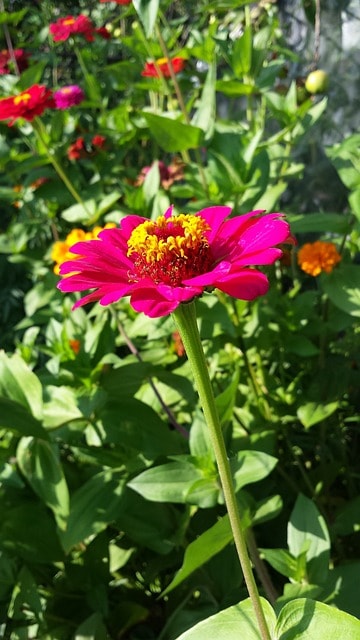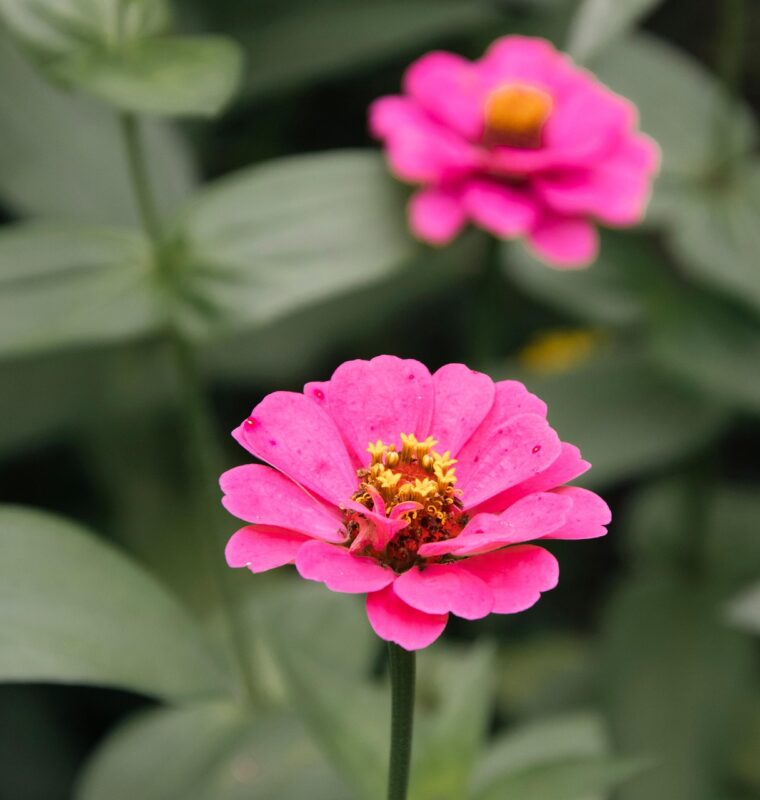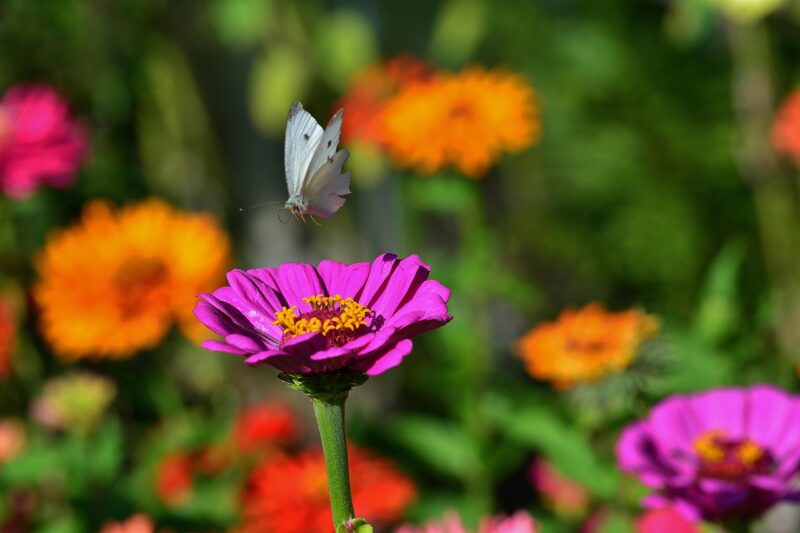If you’re contemplating the idea of planting zinnias in July, you may be wondering about timing, climate, and growth patterns. In this guide, we’ll explore whether July is an appropriate time to sow zinnias, the benefits of late summer planting, and the care these flowers require to thrive.
Understanding Zinnias: An Overview of the Flower

Before diving into the specifics of planting zinnias in July, it’s essential to understand what makes these flowers so appealing. Native to Mexico, zinnias are annual plants belonging to the Asteraceae family. They typically bloom from summer through early fall, with some varieties reaching heights of up to 48 inches. With their various sizes, shapes, and colors, zinnias are not just garden highlights but also attract pollinators like butterflies and bees.
One of the standout features of zinnias is their resilience. They thrive under full sun and can tolerate poor soil conditions, making them ideal for novice gardeners. The simple act of planting seeds or young plants can lead to an abundance of flowers that continue to blossom throughout the season.
The Climate Factor: Is July Too Late?

When considering planting zinnias in July, your first consideration should be the climate and local growing conditions. The optimal time to sow zinnias is typically in late spring to early summer, after the last frost of the season. For many regions, this means planting zinnia seeds between April and June. However, if you live in a warmer climate, you may have more flexibility regarding when to plant.
July can still be a good month to plant zinnias, especially in areas where the temperatures remain warm. Zones 8 and above generally have mild winters, allowing for continuous planting throughout the growing season. However, it’s crucial to keep in mind the length of your growing season. If you’ll have enough time for the plants to mature before the first frost in fall, then July planting can yield beautiful results.
The Advantages of Late Planting

You might wonder why anyone would choose to plant zinnias later in the season. Surprisingly, there are several benefits to sowing zinnias in July.
1. Lush Late-Season Blooms
If you missed planting zinnias in spring, sowing them in July or even early August can fill in gaps in color as your other summer flowers begin to fade. Zinnias bloom from 60 to 70 days after sowing, allowing you to extend the colorful display in your garden into the fall. Additionally, this burgeoning bloom can be particularly rewarding for gardeners eager for color as the season transitions.
2. Less Pest Pressure
Gardeners often face a myriad of pests and diseases in the early summer months as the temperatures rise. By planting zinnias later in the season, you can potentially escape some of the invasive pest pressures. As the temperature continues to rise, your zinnias can grow robustly, and by the time they flower, some of the pest cycles may shift.
3. Utilizing Soil Preparedness
In many areas, the soil tends to be richer in nutrients by mid-summer due to the previous crop cycles or the breakdown of organic matter. If your garden has had time to settle, and you’ve added compost or fertilizers earlier in the season, your late-planted zinnias can benefit from this nutrient availability.
4. Opportunity for Succession Planting
Gardening is a dynamic process, often requiring adjustments based on what works and what doesn’t. Succession planting—replanting after harvest—can create a staggered bloom effect that provides continuous colors throughout late summer and fall. If you’ve harvested early bloomers, July can be an ideal time to introduce zinnias into your garden for a transition into fall.
Preparing for Planting: Essential Steps

If you’ve decided to plant zinnias in July, preparation is key to ensuring a successful outcome. Here’s how you can set the stage for these bright blooms:
1. Choose the Right Location
Selecting an appropriate site is essential for zinnias to thrive. Aim for a spot that receives at least six hours of direct sunlight daily, which is crucial for optimal blooming. Ensure that the soil has good drainage to avoid root rot. Where possible, consider planting zinnias near taller plants that provide some partial shade later in the day to protect them from intense afternoon sun.
2. Soil Preparation
Zinnias can thrive in various soil types, but they prefer well-draining, loamy soils enriched with organic matter. Prior to planting, loosen the soil to a depth of about 12 inches and incorporate compost or a balanced fertilizer. This will provide nutrition and improve drainage, creating an excellent growing environment for your zinnias.
3. Seed Selection
Zinnias come in various varieties, from dwarf types to tall and bushy ones. Choose the variety that suits your garden space and aesthetic desires. Some popular selections for July planting include Zinnia elegans for its bright classic blooms and the more compact ‘State Fair’ mix for a shorter stature. Always check the seed packet for specific planting needs.
4. Proper Spacing
When sowing zinnias, it’s essential to follow spacing guidelines. For larger varieties, aim for a spacing of 12 to 18 inches apart, while smaller varieties can be spaced closer together. Crowding zinnias can lead to poor air circulation, which may increase the risk of fungal diseases.
Planting Techniques for Zinnias

Now that you’ve prepared the soil and selected your seeds, it’s time to plant. Here’s a guide on how to successfully sow your zinnias:
1. Direct Sowing vs. Transplanting
Zinnias can either be direct-seeded into the garden or started indoors before being transplanted. Given the month of July, direct sowing is often the best option as it allows the seeds to germinate in the warm soil. If you choose to start seeds indoors, make sure to do so early in July and transplant them outdoors when they are strong enough to handle.
2. Sowing the Seeds
If direct sowing, create furrows in the soil about ¼ inch deep and place seeds every 6 inches before covering them gently with soil. Water the area lightly after planting. Keep the soil consistently moist but not soggy, as excessive water can lead to rot.
3. Care After Planting
Post-planting, it’s vital to care for your zinnias properly. Water them regularly, especially if you experience dry spells. Once established, zinnias are relatively drought-tolerant. However, consistent watering helps promote vigorous growth and abundant blooms.
Fertilizing every four to six weeks with a balanced fertilizer can support their growth, especially if the soil has low nutrient content. Moreover, deadheading the spent flowers will encourage zinnias to produce more blooms and extend their flowering period.
Managing Growth and Proliferating Blooms
Once planted, it’s important to monitor your zinnias as they grow. Here are some tips for managing their health and maximizing blooms throughout the late summer and into fall:
1. Watch for Pests and Diseases
Zinnias are generally resilient, but they can be susceptible to common pests like aphids, spider mites, and beetles. Regularly inspect your plants, and if you notice any infestations, you can treat them with insecticidal soap or neem oil. Additionally, avoid overhead watering to minimize fungal diseases such as powdery mildew.
2. Provide Support as Necessary
Taller zinnia varieties may require some support as they reach their full height; use stakes if necessary to prevent them from toppling over, especially in windy conditions.
3. Pruning for Aesthetic Appeal
While zinnias do not typically require pruning, cutting back a few stems can help shape the plant and encourage denser growth. Additionally, regularly removing spent flowers (deadheading) will prevent the plants from going to seed too early, further promoting flowering until frost.
Enjoying the Blooms: Creative Ways to Use Zinnias in Your Garden
Once your zinnias start to thrive, they can be used in a multitude of ways in your garden and home. Their lovely blooms not only add color but also have practical and aesthetic applications.
1. Cut Flowers for Bouquets
Fresh zinnias can last up to a week in a vase, making them perfect for cut flower arrangements. They can be combined with other summer blooms or stand alone as striking individual pieces in a bouquet. Their long stems and vibrant colors are particularly appealing for both casual arrangements and more formal displays.
2. Attracting Pollinators
Zinnias are excellent at attracting beneficial pollinators, enhancing the overall biodiversity of your garden. By planting zinnias, you’re helping to create a habitat for butterflies, bees, and other beneficial insects.
3. Companion Planting
Zinnias are compatible with a variety of flowers and vegetables. Integrating zinnias in vegetable gardens can help repel pests that harm other plants while providing a visual delight. Consider planting them alongside tomatoes, peppers, or other summer crops.
4. Educational Opportunities
For families with children, zinnias can create an excellent learning opportunity. Gardening offers valuable lessons in responsibility and science. Kids can observe the transformation from seed to bloom, making it a practical and engaging way to teach about plants, pollination, and the environment.
Conclusion: July Planting is Possible and Rewarding
In summary, yes, you can absolutely plant zinnias in July! With the right conditions and care, you’ll find that late summer blooms can provide a vibrant spectacle as summer starts winding down. You’ll reap the benefits of continual color, reduced pest pressure, and the joy of gardening as you nurture these lovely flowers into full bloom.





